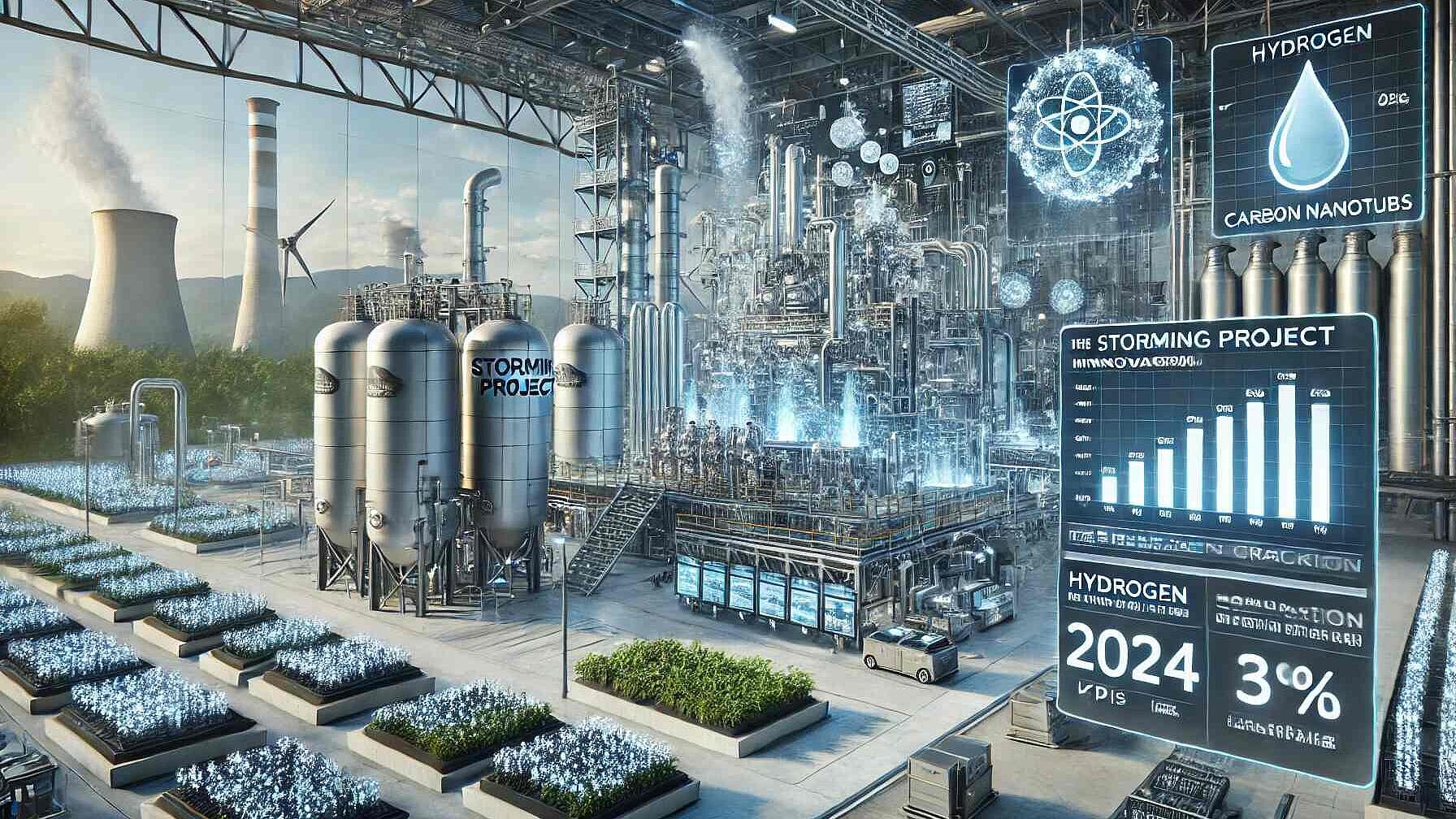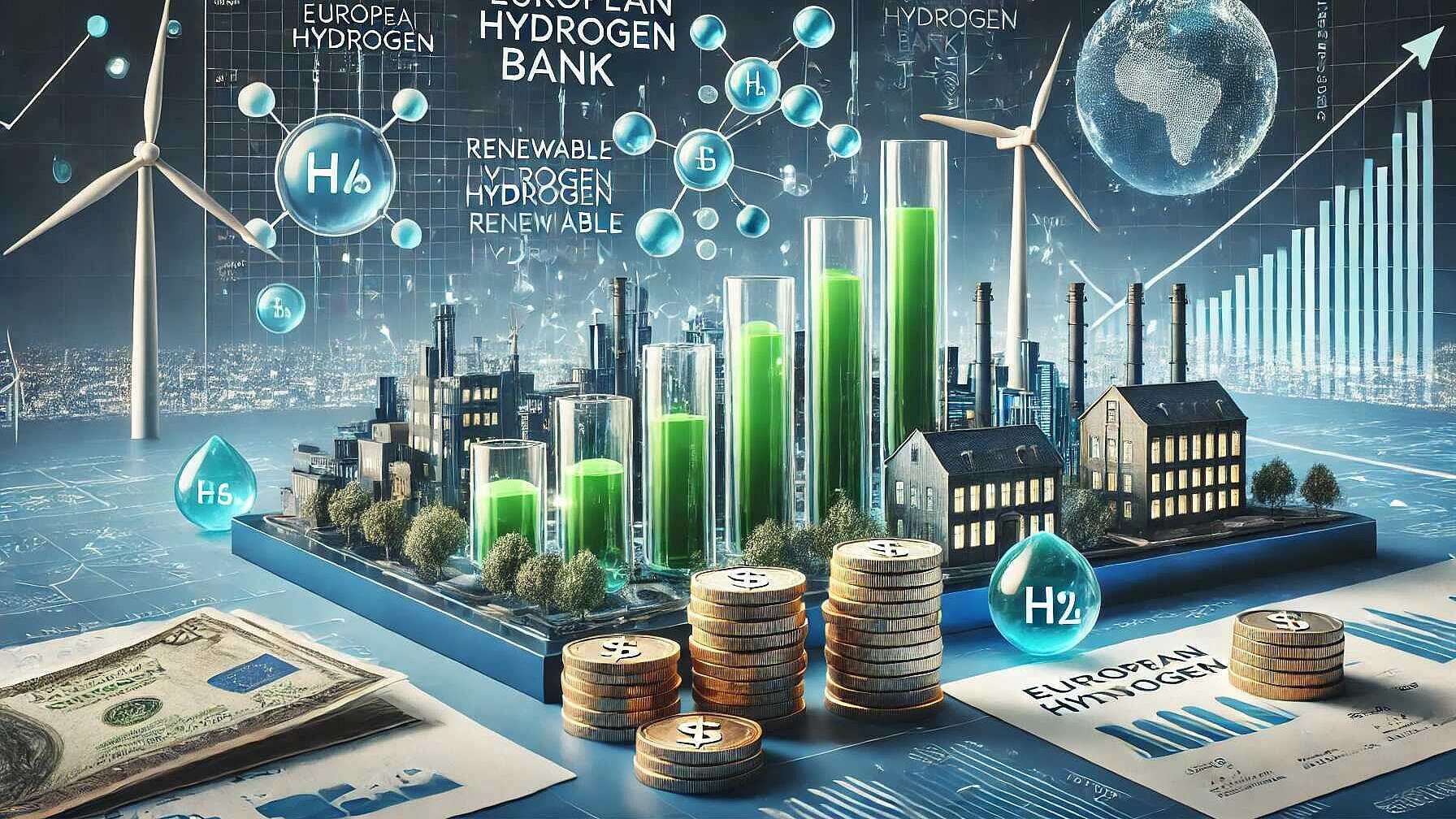 Renewable Energy
Renewable EnergyIntegrating Innovation: The Role of STORMING Project in Aligning with the Hydrogen Pathways Report 2024
Resumo
The STORMING project aims to innovate in hydrogen production through catalytic methane cracking, which yields hydrogen and carbon nanotubes (CNTs) without CO₂ emissions, serving as a CO₂-free alternative to steam methane reforming. The project intends to achieve over 60% energy efficiency, produce hydrogen at a cost below that of blue hydrogen, and scale the technology to a higher readiness level. Hydrogen Europe's 2024 report on hydrogen pathways identifies the need for scalable, low-carbon hydrogen production methods, categorizing technologies by "shades" with turquoise hydrogen being a promising CO₂ emission-free pathway. The STORMING project supports the report's call for diverse technology and contributes towards goals of decarbonizing industries and electrifying mobility using renewable electricity. The production of valuable CNTs potentially lowers hydrogen costs and offers environmental benefits by capturing carbon as solid material. Despite the project's potential, challenges include the energy-intensity of CNTs production and the necessity of industry collaboration for scaling and integration into existing industrial processes. The project's strategy aligns with the Hydrogen Pathways Report 2024, positioning it as a viable option to advance the hydrogen economy and contribute to the EU's energy and climate objectives.
Artigo aberto completo
Integrating Innovation: The Role of STORMING Project in Aligning with the Hydrogen Pathways Report 2024
The Growing Significance of Hydrogen in Energy Transition
The transition to a sustainable and decarbonized energy system is rapidly accelerating, with hydrogen emerging as a cornerstone of this global effort. Hydrogen Europe's "Hydrogen Pathways Report 2024" emphasizes various technologies and strategies to produce, distribute, and utilize hydrogen with minimal environmental impact. Within this context, the STORMING project represents a significant technological innovation, focusing on the catalytic cracking of methane (CH₄) to produce hydrogen and carbon nanotubes (CNTs) without emitting carbon dioxide (CO₂). This article explores how the hydrogen production methods tested in the STORMING project align with the broader hydrogen pathways outlined by Hydrogen Europe.
1. The STORMING Project: Advancing Methane Cracking Technology
The STORMING project is a cutting-edge research initiative aimed at developing breakthrough catalytic technologies for hydrogen production through methane cracking. The project employs advanced structured catalytic reactors, powered by renewable electricity, to convert natural gas, biogas, or synthetic natural gas into hydrogen and high-quality CNTs. This process, often referred to as turquoise hydrogen production, offers a CO₂-free alternative to traditional steam methane reforming (SMR) processes .
Key performance indicators (KPIs) of the STORMING project include achieving an energy efficiency of over 60%, producing hydrogen at a cost lower than blue hydrogen, and developing a continuous process that can be scaled up from a technology readiness level (TRL) of 3 to 5 by the project's conclusion . The dual output of hydrogen and CNTs not only enhances the economic viability of the process but also contributes to the broader goals of decarbonizing industrial sectors and advancing the electrification of mobility.
2. Alignment with the Hydrogen Pathways Report 2024
Hydrogen Europe's 2024 report outlines various hydrogen production technologies, emphasizing the need for scalable, low-carbon solutions to meet the growing demand for hydrogen. The report categorizes hydrogen production methods into different "shades," with turquoise hydrogen representing a promising pathway due to its potential to produce hydrogen without CO₂ emissions.
The STORMING project's focus on methane cracking directly supports the report's advocacy for technology diversification in hydrogen production. By producing hydrogen and CNTs without CO₂ emissions, the STORMING project addresses the report's call for innovative solutions that can complement green hydrogen production, especially in sectors where electrification is challenging .
Moreover, the project's use of renewable electricity for catalytic heating aligns with the report's emphasis on integrating renewable energy into hydrogen production. This not only reduces the carbon footprint of the hydrogen produced but also supports the European Union's goals for renewable energy integration and carbon neutrality by 2050 .
3. Economic and Environmental Benefits
One of the critical challenges highlighted in the Hydrogen Pathways Report 2024 is the high cost of green hydrogen production, which limits its widespread adoption. The STORMING project addresses this challenge by offering a lower-cost alternative through methane cracking. The simultaneous production of valuable CNTs provides an economic credit that reduces the overall cost of hydrogen, making it a competitive option against traditional and other low-carbon hydrogen production methods .
Additionally, the environmental benefits of the STORMING project are substantial. By capturing carbon as a solid (CNTs) rather than as CO₂, the process avoids the emissions associated with traditional hydrogen production methods. This supports the EU's methane strategy by utilizing biogas and synthetic natural gas, further contributing to the reduction of greenhouse gas emissions in the agricultural sector .
4. Challenges and Future Outlook
While the STORMING project demonstrates significant potential, it also faces challenges that must be addressed to achieve widespread adoption. The production of high-quality CNTs is energy-intensive, and scaling up the technology from TRL 3 to 5 will require substantial investment and collaboration with industry stakeholders .
Furthermore, the integration of the STORMING technology into existing industrial processes, such as steel production, will require careful planning and coordination to ensure that the hydrogen produced meets the specific needs of these sectors. However, the project's alignment with the Hydrogen Pathways Report 2024 suggests that it is well-positioned to contribute to the broader hydrogen economy, particularly in hard-to-abate sectors .
5. Conclusion: A Strategic Fit in the Hydrogen Economy
The STORMING project's innovative approach to methane cracking represents a critical advancement in the pursuit of sustainable hydrogen production. By aligning closely with the Hydrogen Pathways Report 2024, the project not only contributes to the diversification of hydrogen production technologies but also offers a scalable, economically viable solution that supports the EU's broader energy and climate goals.
As the hydrogen economy continues to evolve, projects like STORMING will play an essential role in ensuring that hydrogen can be produced and utilized in a way that is both environmentally and economically sustainable. With its focus on CO₂-free hydrogen production and the generation of valuable by-products like CNTs, the STORMING project exemplifies the type of innovative thinking that will be necessary to achieve a truly sustainable energy transition.
---
This article integrates insights from both the STORMING project description and the Hydrogen Pathways Report 2024 to provide a comprehensive overview of how the project fits within the broader hydrogen economy. The strategic alignment of STORMING's objectives with the goals outlined in the Hydrogen Europe's report underscores the importance of continued innovation and collaboration in the energy transition.
Sources



